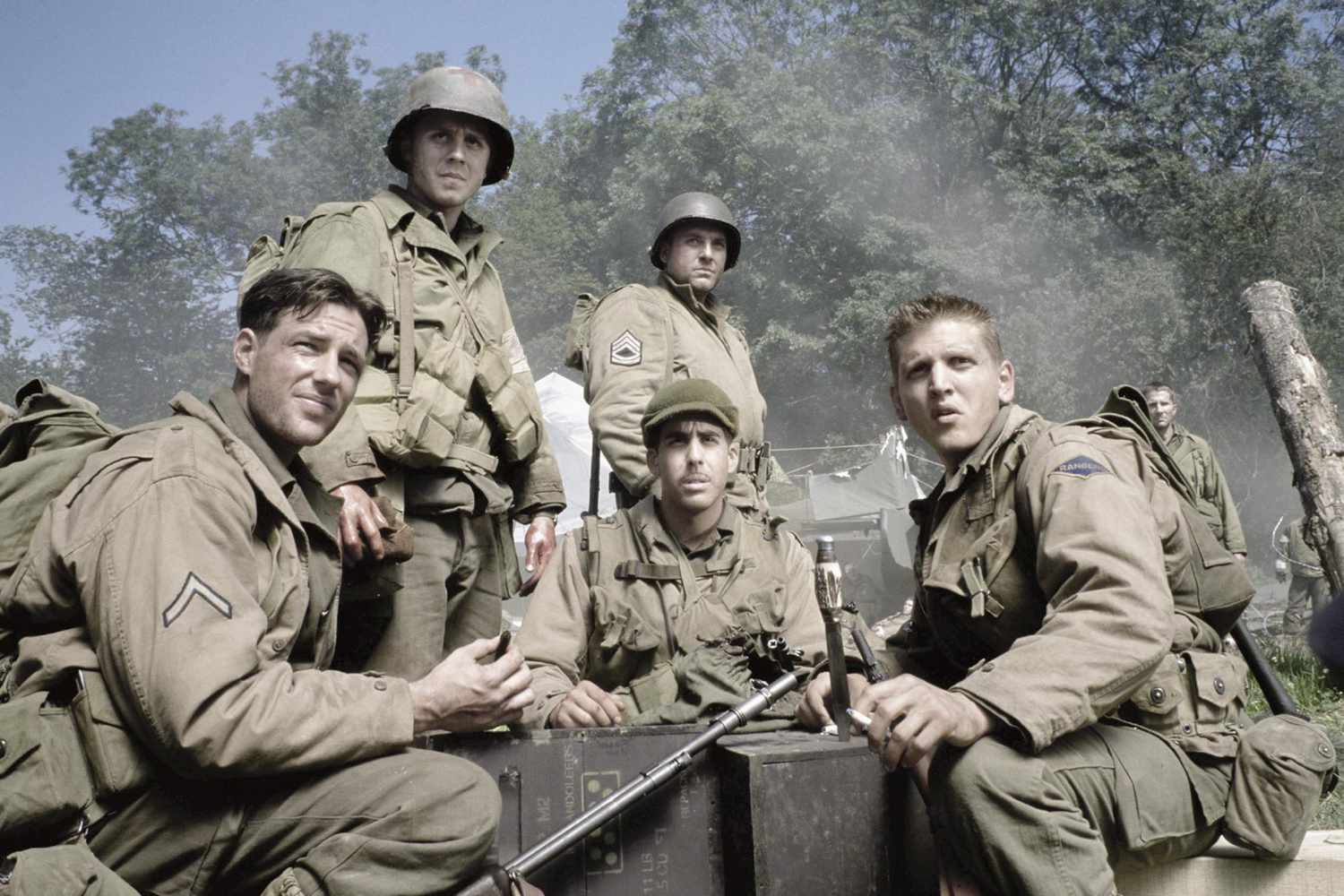The Immersive Narrative and Stylistic Direction of Saving Private Ryan
War has always been a recurring theme in filmmaking, serving as a catalyst for social commentary and shedding light on the harsh realities of conflict. Spielberg’s acclaimed masterpiece ‘Saving Private Ryan’ stands as a testament to the power of cinema in depicting the indiscriminate terror of trench warfare. This article delves into the immersive narrative and stylistic choices employed by Spielberg, aiming to immerse the audience in the dark and bloody realities of war.
An Unforgettable Beach Landing
One of the most striking and powerful sequences in Saving Private Ryan is the harrowing portrayal of the Omaha Beach landing. Spanning half an hour, the scene follows Captain Miller, portrayed brilliantly by Tom Hanks, and his squadron as they face immense casualties and enemy ambushes. Spielberg’s direction immerses the viewers into the chaos and brutality of the battlefield, refusing to flinch from the gruesome realities faced by the soldiers. By focusing on the experiences of Captain Miller, the audience is thrust into the heart of the action, feeling the intensity and fear of the situation as if they were right there on the beach.
Moving Away from Spectacle
Unlike traditional war films that often rely on spectacular explosions and theatrical drama, Spielberg takes a different approach in Saving Private Ryan. The director deliberately avoids sensationalizing warfare, presenting it as raw and unglamorous. The soldiers’ deaths are depicted without fanfare or grandeur, reinforcing the notion that these are real lives being lost. The absence of cinematic spectacle allows the audience to connect on a deeper level with the characters and their struggles, blurring the line between fiction and reality.
The Anti-War Message
At its core, Saving Private Ryan is an unapologetic anti-war film. It explores the futility of warfare, the injustice of sacrificing inexperienced soldiers, and the sheer terror that permeates the battlefield. However, Spielberg goes beyond simply conveying these messages through the plot. He employs immersive action sequences and careful stylistic choices to make the audience truly feel the horrors of war. It is through this personal experience that the film’s arguments against war become even more persuasive.
Breaking Down the Barrier Between Fiction and Reality
Spielberg’s commitment to immersing the audience in the film’s narrative blurs the boundaries between fiction and reality. By witnessing the horrors and feeling the fear alongside the characters, the audience cannot escape the film’s true meaning. The film becomes a visceral experience that leaves an indelible impact, making it impossible to remain detached from the film’s deeper ideologies.
Earning Their Place in History
While Saving Private Ryan encompasses the larger scope of World War II, it also takes the time to develop a smaller, intimate story that sheds light on the personal trials and tribulations faced by soldiers. Amidst the monumental battles and sacrifices, the film focuses on the individual struggles and the resilience of those on the front line. Captain Miller’s dying words to Private Ryan encapsulate the film’s essence – “earn this.” It emphasizes the importance of the sacrifices made by the soldiers and reminds us of the individual stories that collectively shape history.
Conclusion
Saving Private Ryan stands as a testament to the power of film in depicting the realities of war. Spielberg’s immersive and unflinching approach transports the audience into the heart of the conflict, evoking a sense of empathy and understanding. By avoiding spectacle and focusing on the authenticity of the characters’ experiences, the film carries a profound anti-war message. Saving Private Ryan serves as a reminder that the true cost of war lies not only in victories and losses but in the individual stories of those who fought and persevered.
Frequently Asked Questions (FAQs)
1. Did Saving Private Ryan win any awards?
Saving Private Ryan received critical acclaim and won several awards, including five Academy Awards. These awards recognized its outstanding direction, cinematography, sound design, and editing.
2. How historically accurate is Saving Private Ryan?
Saving Private Ryan is praised for its attention to historical detail and accurate portrayal of combat. Spielberg consulted with military experts and veterans to create an authentic depiction of World War II.
3. What impact did Saving Private Ryan have on war films?
Saving Private Ryan revolutionized the war film genre with its realistic and gritty portrayal of combat. It set a benchmark for future war films and influenced the way filmmakers approached depicting war on screen.
4. How did the Omaha Beach sequence in Saving Private Ryan come to life?
Bringing the Omaha Beach sequence to life required extensive planning and meticulous attention to detail. Spielberg worked closely with a team of experts to recreate the battle, utilizing intricate set designs, practical effects, and a large ensemble cast.
5. Are there any other films similar to Saving Private Ryan?
While Saving Private Ryan is widely regarded as a masterpiece, there are other notable war films that explore the realities of combat. Films such as “Apocalypse Now,” “Paths of Glory,” and “Full Metal Jacket” also provide thought-provoking narratives and immersive experiences.

